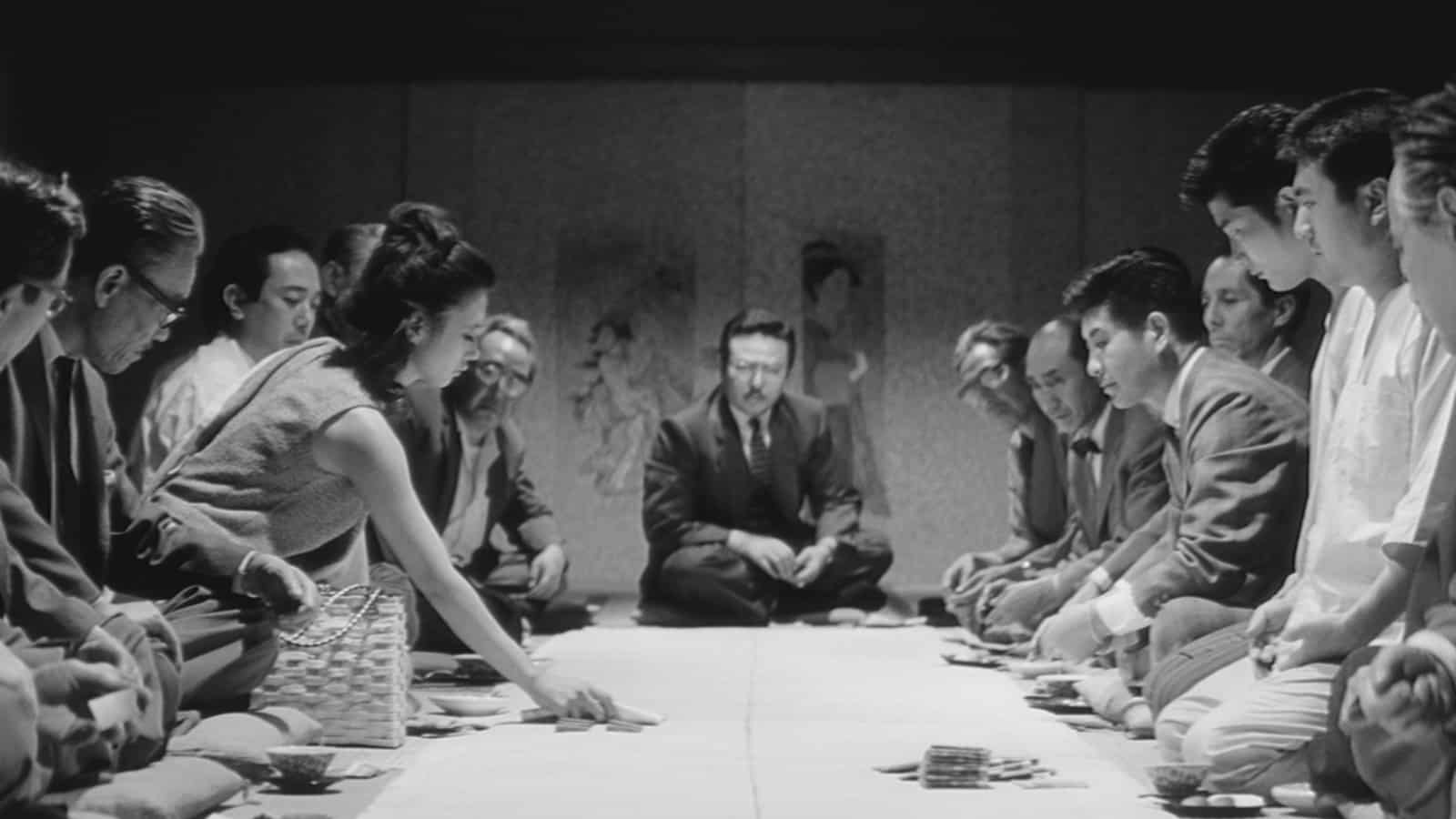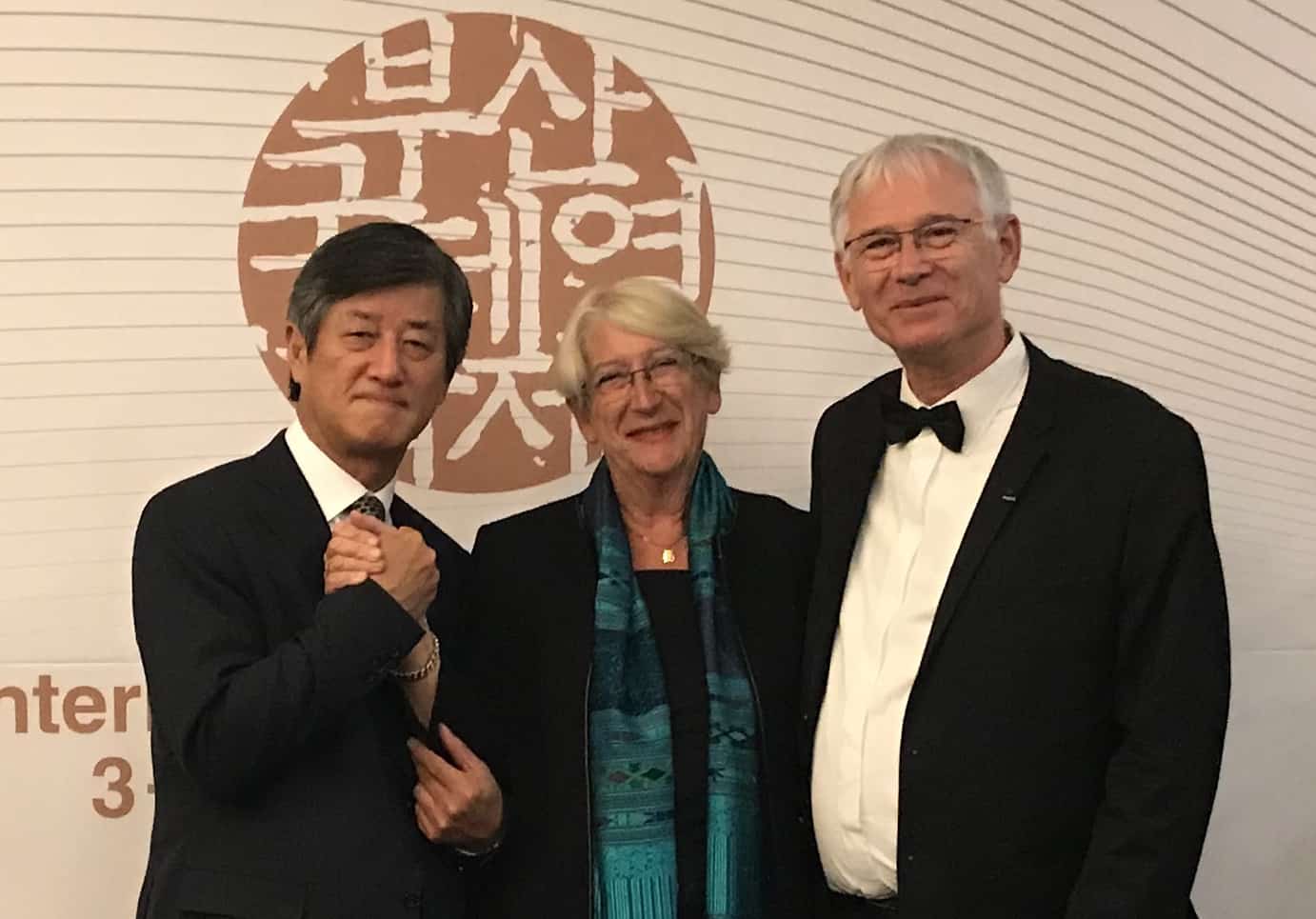Leo Katigbak began his career as a freelance writer, editor, producer and director for television in the mid-1980s. He established the ABS-CBN Film Archives in 1994 and later took on roles in content acquisition and programming for the broadcast channels of ABS-CBN and Studio 23. He was chief of staff in the president's office when he launched ABS-CBN Film Restoration. Now a consultant, he oversees the defense operations of Sagip Pelikula (Rescuing Film) and the restoration efforts of ABS-CBN.
Rica Leticia I. Arevalo is currently the Head/Project Development Officer of the Film Education Division of the Film Development Council of the Philippines. She has also shot features, shorts, and animation, and was the recipient of the 2005 Cinemalaya Best Direction Award for “ICU Bed #7.” She has also worked as executive producer and script writer in various movies, while her activities also include article writing and teaching.
Mikhail Red is an independent Filipino filmmaker based in Manila, the Philippines. He wrote and directed his first short film at 15 and immediately earned recognition in local and international film festivals. As a young up-and-coming filmmaker, he continued making short films throughout his teenage years, screening his works at film festivals in Hong Kong, New York, Berlin, Seoul, Austria, and Canada among others. At 21, he wrote and directed his first full-length feature film entitled “Recorder”, which had its international premiere at the 2013 Tokyo International Film Festival. Since 2016 and the success of “Birdshot”, he has been shooting a film a year, most of which were box office successes.
On the occasion of their presence in FICA Vesoul, as part of the tribute to Filipino cinema, we talk with them about ABS CBN, Viva, the Film Development Council of the Philippines, the restoration efforts of older movies that are now taking place, the Filipino movie industry, and many other topics.

What happened with ABS-CBN? Who took its place, what is the situation with the company?
Leo Katigbak: ABS-CBN was the victim of a political vendetta. We lost the franchise. Basically, ABS has had to pivot and change its strategy. Personally, I think there were some in government who were upset that they were not able to completely shut us down. Because that was what they were hoping to do, they were trying to take the building and seize the assets of ABS-CBN. From a strategic standpoint, we are now more or less focusing on creating content for different platforms, because there is no frequency either, since all of the frequencies and franchises were already given away. So ABS now is focusing on creating content for different platforms, whether it's Netflix, HBO, etc. So it is now a content company.
Do they still produce movies?
Katigbak: Yes, but have scaled down at this point. Because financially, we are still very much affected by the shutdown.
And what about this whole thing with the restoration that is happening? I think more than 200 movies have been restored?
Katigbak: Yes. Since we started in 2011, we were actually able to do between 20 to 30 movies a year. However, since the franchise denial, that has been scaled down. Most people however, did not notice this because we worked so far in advance, we were able to bank 20 movies when the shutdown happened. So we were still releasing every few weeks. And people thought that restoration was still ongoing. Now we are trying to do between three to five movies a year if we can manage it.

How is your cooperation with the Film Development Council of the Philippines?
Katigbak: We have been cooperating for the longest time with the film Development Council of the Philippines. They have had a lot of events where they have actually gotten the movies from ABS CBN to show and we have ongoing discussions also with the current chairman. Because they also want to focus on the advocacy of saving films.
Can you give me some details regarding the Film Development Council of the Philippines, regarding its operation?
Rica Leticia I. Arevalo: We have a new chairman, Tirso S. Cruz III, and his advocacy now is education. We are launching a project, it is called Academic Film Society. We're giving grants for easy scale for college students. So we also realize that we need to develop Filipino content. Even if we go to festivals, we don't have content. So a lot of young filmmakers now are going to different labs around the world. And we give a financial assistance.
How would you describe the situation of the Filipino movie industry at the moment?
Arevalo: The pandemic shutdown our theaters. Less production companies are making films and most resorted to streaming. The FCCP has a cinematheque, so for this year, we started bringing in the audience by showing classic films in the theaters.
Katigbak: From our perspective, commercial movies are still struggling right now. The Hollywood blockbusters are getting good numbers but still not compared to pre-pandemic levels. Regarding local movies, for example, Mikhail Red's movie “Deleter” is one of the exceptions rather than the rule, because this was a major blockbuster. We used to do our restored classics festivals in cinemas, but to be realistic and pragmatic about it, in the hierarchy of movies, the classics are actually at the bottom . Our movies are older. Most of the celebrities and the creators of the movies are not well known to the audience. So it's a lot of re-introducing them to the audience. That's why we are struggling to get the older classics back to the cinemas, because even the newer movies are having a hard time.
Mikhail Red: Like Leo said, we are still struggling, especially theatrically. A good comparison is the pre-pandemic Metro Manila Film Festival, which is basically the whole holiday season , where for two weeks all the cinema slots are locked for local films. In 2019, the gross was double than what we grossed in 2022. And if you think about it, any other theatrical release outside of the festival did not profit.
Arevalo: Going to the movies is like going to an event. You have to plan, it has to be a big event for people to come.
Why is that, why isn't going to the cinema an everyday event?
Red: It is very expensive, not a lot of people can afford a movie every week. So they save it for the Christmas season, for example. And maybe that's why, compared to the rest of the year, in fact only Metro Manila Film Festival films profited. The rest of the ones distributed in cinemas, since December, and then the January February releases, even Valentine movies, did not do so well. But at the same time, Amazon Prime video just released two Filipino originals back to back. So there's that shift towards streaming, which is becoming a more realistic model about feature films.
Katigbak: I guess it depends on the kind of budget that you have. With streaming, you can be more experimental with your themes. If you're going to go theatrical, you have to go with something that's more formulaic and a crowd pleaser to improve your odds of breaking even.
Red: Although what's new is that they just launched a summer version of Metro Manila Film Festival. So it's the same concept where for two weeks, they just lock the cinemas for all Filipino films. So it's something new, they're gonna try it. So we'll see what happens.
What is the number of the films?
Red: 8 and no other movies can be shown, except IMAX.
Why is the ticket so expensive though?
Katigbak: We also asked that question, but I think what happened was the cinemas lost so much money during the pandemic, that they felt that the people who would normally go to the movies were the ones who would be willing to pay anyway. So whereas prior to the pandemic, the tickets were probably topping out between, say P 250 to P 300 pesos. Now for regular tickets, you're getting P 500, almost double.
So this happened after the pandemic?
Red: Yes, we also lost some screens. A lot of theaters were converted to event halls. Because, you know, during the pandemic, they weren't showing movies. So there was a permanent loss of the number of screens compared to before.
Before the pandemic, would local audiences watch local movies?
Arevalo: Yes, especially during the Christmas season.
Katigbak: Even outside the Christmas season local films would do extremely well. For example, two of the movies that our company made remain the the all-time top grossers. They did some 750-850 million pesos domestic, both with Kathryn Bernardo. You knew there was a market for it, but that market went to streaming during the pandemic.
Do you cooperate with the Metro Manila Film Festival?
Katigbak: Our company produces movies, and during the last film fest, two of the 10 movies were from our company.
And the Film Council?
Arevalo: Yes, we are supporting them, we are giving them grants for the producers.
And since you are now doing this restoration, what do you think is the knowledge of the local audience about the old movies?
Katigbak: Very bad, but you have to take into account that more than half of the Filipino population is below 25 years of age. So when you have such a young median, most of them lack awareness because they are not exposed. So when we do the film restoration, that is only one half of what we do. The other thing I'm pushing is the film advocacy, SAGIP PELIKULA. which is translated as Rescuing Film. And we partner with academia, with teachers and try to bring some of the older movies to schools, and I would often go and talk to explain about the movies, the restoration process or the history of a particular film, or anything that would make them interested to watch them.
Check the interview with Mikhail Red
How does the Film Council work in that regard?
Arevalo: We have the Philippine Film Archive (PFA), they also restore films and they have monthly screenings of old films, targeting students.
Red: It is also interesting to note, that very recently, when you have been sending batches of older films to Netflix, there has been like a new explosion of awareness, especially with the younger generation because it's being shared in social media. The older films are now on Netflix
Katigbak: And the good thing about it is, for example, when we used to have our premieres, in cinemas, there were a lot of celebrities who were not involved in the movies, but they were cineastes so they would attend and they would be willing to be interviewed etc.. And they will post on their own social media. Because my feeling is, if I were the one talking, who cares what Leo has to say. But if it was Lea Salonga, Charo Santos or even Mikhail Red, that makes a difference, because they have a sizable following.
Would you say that there is a star system now in the Philippines?
Katigbak: There is, but is changing. Unlike before, where stars used to stay on longer. Now, if you do not manage your career properly, you will be old news in a matter of months.
Arevalo: There are a lot of influencers and bloggers who have become endorsers and actors.
Red: It also doesn't always guarantee box office. That's something we learned, that having a strong following does not guarantee box office success. And there are certain stars that are just popular on TV, and then they don't translate well in the cinema, and the other way around as well.
Would you say that the audience knows your father's films, Mikhail?
Red: Sadly the newer generation is not so familiar with it.
Katigbak: Let me put it this way. Our generation knows Mik's father but the wider audience knows Mik.
This is a hypothetical question. Let's say you were shooting a movie, a crowd pleaser. What would that movie entail?
All together: Comedy, horror, romance
Katigbak: Because back in the day, when we used to do more adult dramas, the profile of the audience was that in the afternoon, the box office wasn't so good. But in the evening, the people who worked in offices were the ones who would watch films. So usually on the first day, you would know how a movie will do for this entire run because of the multipliers from 5 o'clock, six o'clock, seven o'clock, and so on. Now, none of that applies because the viewing habits have shifted so much. And also, for example, for comedies and for dramas, if people feel that you could just watch on a streaming service they will not bother going to the cinema. It has to be an event like Mik was saying
Red: There's the notion where everyone's always, “let's wait for it to be on Netflix”. That's like a common sentiment.
Arevalo: And there is also piracy…
Red: So it has to be like, a movie should include this like novelty event, spectacle value for them to pay that much
How does censorship work in the county?
Katigbak: Let's put it this way. It's called the Movie and Television Review and Classification Board (MTRCB). So as far as they're concerned, they do not censor. But basically, you have to comply with their guidelines. If you want a better rating, then the producers decide voluntarily on the cuts. That's it, basically. Now there are perceptions of inconsistencies. We feel that sometimes they are more lenient with Hollywood movies, a local movie that by similar standards should be rated, say Parental Guidance might get a General Audiences rating if it's a Pixar or whatever, even if there is random violence in it.
Red: Sometimes they randomly zero in on a film like “Plane”, compared to “Shotgun Wedding” for example.
Katigbak: Those are the politicians though, not the censors. Recently there was this big scandal because the movie “Plane” had as a theme a plane crashing in the Philippines, and then one of the senators was grandstanding and saying that this is so insulting to the Philippines and whatever, but when you think about it, there's been no rhyme or reason about it. If that was your attitude, you should have banned “Shotgun Wedding” by Jeniffer Lopez or “Tar”. There are people who grandstand these.
Who runs the Board though?
Arevalo: A senator's daughter.
Katigbak: Yes, but the body itself was set up by Presidential Decree and the Board reports directly to the Office of the President, and the Head of the Censor Board is always a presidential appointee. The members of the board will be recommended representing a cross section of society. Depending on the chair, they might increase the number of representatives from the film industry. The current chair of the MTRCB is the daughter of a Senator [who was also an actor]. She has increased the representation of the industry in the current board which is good In the previous administration, a lot of them were political appointees who didn't know that much about cinema. That's why local films were also having a harder time with the Board then.
But would you say let's say, someone makes a film that criticizes the government directly. Would they have issues?
Katigbak: It is happening right now. The film may just get a more severe rating. Like, objectively, if I were to review the film, I would say that it should be a PG movie, because there's no sex or violence or whatever. But they might make it an R13 to restrict the audience that can watch it.
Arevalo: Right now, they want to touch the streaming companies, because they cannot rate their content and they can get money from them.
Katigbak: But that's something that's going to be very difficult because most of them operate outside of the Philippines. If you will impose it on, let's say Vivamax or any of the local streaming, then in the interest of fairness, it has to be applied to everybody. Even HBO, Disney+ Netflix, Prime etc.
Have you ever felt restricted content-wise, when you are shooting your movies?
Red: I think it's funny that when you're more independent or arthouse they don't even know the film exists. It's usually when something becomes more viral, mainstream, that they notice. When you go to Cinemalaya, there are a lot of films, very socially relevant, very critical of the government, but they don't mind those, or the films that play in A-list festivals. It depends on the visibility here, as for example with the film “Plane”.
Katigbak: But to be fair, there was no problem with the sensors, it was with the senators who made it a big issue.
Red: It can be very random, like with Jerrold Tarog's Bliss”, I remember that it was X rated
I had an interview here a couple of years ago with Arden Rod B. Condez, and he told me, half serious half joking, that there are too many films being shot in the Philippines, pre-pandemic at least, because it is really easy to do so. What do you think?
Katigbak: My take is that there are a lot of people who call themselves filmmakers, whom I don't think have properly earned the title. I would watch a lot of movies at festivals and I would say that, under normal circumstances, that movie should not have even been made. But I guess that's the purist in me. I remember having an argument with one of my colleagues and he said, “you're just being critical of this and that director, it is their first movie so you should give allowances” and whatever. And I would say, “But Mike De Leon's first movie was “Itim” and he was shooting on film, which is a more difficult medium. And he set such a high benchmark. The same with the first movie of Marilou Diaz-Abaya and so many others. So when you have an easier way of making movies, why will I give them a free pass on lapses in storytelling, in narrative and execution?” There's also a mindset that, because it's digital, let's cure everything in post. I came from the mindset when shooting on film; do the cinematography properly, do the lighting properly, do the audio properly, if it encounters problems, then fix it in post. Unlike now, where the mentality is, “oh, don't worry about the lighting. Don't worry about the audio. We can fix everything in post”.
Red: There are a lot of films being made, but a lot of them felt disposable in such a way that there really was no distribution. Because there was a time where there were so many local film festivals that gave grants, even niche smaller ones. So a lot of the time, there were films that were made for those festivals just to get the grant. And then once they premiered there, they were gone, there were no theatrical runs and no screenings.
Check the interview with Arden Rod B. Condez
What about Filipino film schools?
Katigbak: There are film courses. But I can only speak from my perspective, and I was talking with other professors and directors before, one of the main complaints was that there were no good copies of Filipino movies, so they ended up going back to watching Hollywood movies. So when we were starting Sagip Pelikula, we said that one of the things we wanted was to prioritize a lot of the older classics. So now, there are actually movies from Ishmael Bernal or Lino Brocka or Eddie Romero, that could be watched with good video, good audio, good colors and what not. And I think like of the 200 movies that ABS CBN has restored, around 40 to 50 of them are actually from the classic era, the second golden age of cinema. So now at least when you say that “Blessings of the Land” from 1959, is our version of Citizen Kane, you can actually put it out there and people can see the movie already because there is a restored version that survives
There is no national film school though?
Katigbak: No, there are courses in different universities but not one central one.
Arevalo: However, one of the earliest film programs is the Mowelfund Film Institute, where Raymond Red was involved.
Katigbak: And then some directors also put up their own schools, Marilou Diaz-Abaya for example had her own film school named MADAFI [Marilou Diaz-Abaya Film Institute and Arts Center]. And basically this was a higher level course for people who were already in the industry, who are familiar with the language of cinema. So it was more of an experiential thing, where you have somebody as acclaimed as Marilou, who is also now a national artist for film, providing the course and getting other speakers also, who are very formidable voices in the film industry.
Red: I was in the MDafilm actually.
So you don't think there is a necessity for a national school of cinema.
Katigbak: It would be nice to have. But I think with all of the problems of the Philippines, I don't know how it can be prioritized
Arevalo: Most of the film graduates came from the University of the Philippines and De La Salle-College of Saint Benilde, they have good programs.
Red: There are also regional schools now, there are people who have come from various programs around the country.
Katigbak: I think one of the advantages right now is you have more film practitioners who are teaching. When I was still in college—although I did not take up film—one of the complaints from peers was that a lot of the professors were not from and in the industry, so they would always talk theoretically with scenarios from a perfect world or ideal industry. But you know, the moment that people entered the industry, the reality was very, very different from what they were taught in school.
Do you feel that with all the directors that are working in the Philippines right now that could compete with each other?
Red: Not really, I would say, if there is competition, it's more of studios competing to get for example, in the top eight of MMFF, because the real competition is getting in, because you already have that guarantee of two weeks screening when you are included. So it's more that rather than filmmakers competing. We're all Facebook friends, and we see each other all the time in festivals, there is a general camaraderie among the filmmakers.
Can you tell me a bit about Cinemalaya, particularly this unique thing that they do with the films.
Arevalo: I was part of the first batch of directors featuring in the festival. Its true beginning came because Antonio O. Cojuangco owns a TV network and he needs content.
Katigbak: Tony Cojuangco is a very, very wealthy man (everybody laughs). He had a distribution digital platform so one of the ideas was for CINEMALAYA to give grants, the filmmakers would be keeping the rights to their films, but there was a window where the movies would be exhibited on the platform. That actually happened. In ABS CBN, we had something similar with Cinema One. And part of the deal was, while the creators ended up being royalty participants in the deal, the ownership was actually going to be with Cinema One, and the movies would screen in different platforms that the company had, whether it was streaming, whether it was a satellite, whether it was cable, or even free TV. So it depends on the agenda of the company. Like there is another festival called QCinema, which is produced by the Quezon City government. So that's like a more localized festival. But you know, a lot of people are happy to get grants and create their movies.
I think one of the general problems with Cinemalaya was that it was more of a content arrangement. However, there wasn't as much support in technical terms. So in fact, the earlier movies of Cinemalaya, I think suffered because of the fact that they were shot in low grade video for example. So even if the movies were very, very good before content-wise, they are not compliant with the demands of the digital platforms right now. I think that's been the difficulty.
Arevalo: However, there were a lot of filmmakers discovered in Cinemalaya.
Would you say that you're optimistic about the future of Filipino cinema?
(everyone laughing)
Katigbak: Me, because I handle the restoration side of film, I have to be optimistic because if the interest for the old movies dies with my generation, it is really going to be very, very tragic. Back in the 60s and the 70s, you had Lamberto Avellana and Eddie Romero and Brocka and Bernal already making names internationally in different festivals. But somehow the years have not been kind and they had been forgotten. Now people know Mikhail Red and Brillante Mendoza, and Lav Diaz and a lot of other younger directors. But it is such a shame that we do not remember the Brockas and the Bernals. I am optimistic in the sense that when we bring the advocacy of Sagip Pelikula to the different universities, I am approached by a lot of the students, and they will tell me that, “Oh, I did tnot know that we made such quality movies in the past” or somebody will say that, “Oh, my grandparents used to talk about those movies and now I can understand why.” Or the relatives or the grandchildren of an actor would say, “I have never seen the work of my grandfather. I'm glad that because of this, I now know that he is actually a great actor”. So to me, that is a very, very heartwarming thing. In my mind, a lot of younger people will not like the older movies, because they are slower paced, less visually dynamic so on and so forth. But for every ten people, if there are two to three that would be interested to watch it, will be willing to research the other movies of the other people, then you know that the interest and the memory and the respect and the recognition for everyone who has passed before will still be around. It will not die with our generation.
Arevalo: We have the new generation like Zig Dulay and Mikhail Red who continue to share their voices to the world. I mean, they're very independent and at the same time, they communicate well to the audience. They have their own voice and we support their voices.
Red: it is strange because honestly, after the pandemic, everything scaled down. We used to make bigger movies in terms of resources, time, shooting hours, etc. Now there's more opportunities because of the streamers but things feel a bit tighter. On the other hand, maybe we're just lucky because we started pre-pandemic, we were able to get through the gates before they closed. Our experience makes up for the lack of time, because now we're more efficient. But I'm trying to imagine the perspective of someone starting now. And during these post pandemic times, it might be harder to break in, because now the studios are more risk averse due to the pandemic, they'd rather bet on something sure. So they get directors with experience.
It is a good thing that there are still film festivals, like Cinemalaya, that continue to prioritize first features. And there are still grants, there are more co-production grants. But I hope there's more initiative for first and second feature films and hopefully, new streaming companies that are coming in, will consider more line productions. Because I don't know if it's also getting narrower from the streamer perspective. They're just like picking favorites now. So we'll see. I hope it diversifies.
Katigbak: From the perspective of being someone older, the way the movies feel now is like you have more maverick directors, like the movies “Easy Rider” with Peter Fonda, that era during the 70s when the filmmakers were splitting from the studio system and going towards more adventurous paths in terms of themes and exposition. I feel that is where Filipino cinema is going nowadays. You have directors like Zig Dulay, Mikhail Red, Sheron Dayoc etc mixing the commercial with the arthouse. But they are also going beyond what is traditionally expected. I think streaming liberalized and democratized the nature of the content that is coming out, but also, although it used to be more Philippine-centric, now streamin is going all over the world. Therefore, there is a larger chance your actors will be discovered abroad. The world is opening so we hope that more people will discover the movies Mikhail and all the rest of the aforementioned are shooting. And hopefully this will have a universal appeal, so their playground becomes a much wider playground.

Can you tell me a bit about Viva, since you are cooperating with them?
Red: I did “Deleter” with them. During the down time of the two years of the pandemic, Viva saw the opportunity of streaming so they launched Vivamax. At first, it was more diverse but then slowly, they realized that erotic films were getting more attention so they made a lot of those, also because it is easier and faster to shoot such movies. That was the main type of films they were making but then they decided to branch out with Vivaprime, just to change the branding, and they placed more diverse works there and Vivamax kept the erotic branding.
Do they also distribute to cinemas?
Red: Recently they started, but they are struggling, most of the films that got a profit were from MMFF, so it is still tough out there without the festival. But hopefully they will be a summer version of MMFF, so there will be a market there for theatrical releases. They are not only releasing their own streaming, they have also made deals with Amazon. One of my films will also be in a streamer, when we can announce it. They also want to branch out with genre, since they saw that there is demand and are taking that risk, working with maverick filmmakers as Leo mentioned, filmmakers who came from the film festival circuit, which was rare before. That is why they launched the term, ‘maindie' mainstream and indie. Even in Hollywood they are doing that now, they get a filmmaker who was just launched in Sundance and just throw them in a Marvel movie, with mixed results. Maybe because we are used to working with smaller budgets and shooting guerilla style. I guess they have found some appeal now that the Gen Z, Gen Y audience is growing, it connects to them.
Katigbak: A lot of Viva's movies now are of that variety, but Viva has been around for decades, they started in 1981, and back then the image of their films defined an era of film-making. Viva's first decade was marked with glossy looking productions, initially based on comics material and everything about them was was larger than life. Over the decades they helped shape film production too, starting with the glossy dramas, then shifting to youth films and some very good social commentary movies, like Marilou Diaz-Abaya's “Baby Tsina”. They were always pivoting, the quality was there, they had their base, but because they had their audience they could experiment. The erotic films I guess were a necessity because of everything that happened in the pandemic, and these films were a sure-fire way of getting an audience. And they stuck to their claim that every week they would launch one new movie.
Red: And right now, they are in the top among the local streamers. They also do a lot of co-productions, with MMFF for example.
Check the review of “On the Job”
Could each one of you tell me a Filipino movie you think international audience should watch
Katigbak: I find that Olivia M. Lamasan's films translate very well for international audiences. They are produced by ABS but I remember that some friends from Australia who had seen “The Mistress” on Netflix, told me that they liked it so much that they started searching for more movies by the director. Personally, I would go for “Miracle” by Ishmael Bernal and starring Nora Aunor, which won the Viewer's Choice Award for the Best Film of All Time from the Asia-Pacific Region in the 2008 CNN Asia Pacific Screen Awards, voted by thousands of film fans around the world. And if we were to go before that, I would again mention “Blessings of the Land”
Arevalo: I like the films of Mike De Leon, from his comedies like “Kakabakaba Ka Ba?” to his more serious works like “Kisapmata”, “Citizen Jake” etc. and right now is very vocal about his stand against the government. He is consistent.
Red: I will recommend one that is already popular with the international audience, but I just think it represents the ability and versatility of Filipino cinema, and how we can keep up with modern cinema. “On the Job” by Erik Matti, I think it really made a mark on how we can create genre cinema but with our own Filipino identity and social commentary. It is a film that has been inspirational for me.


















